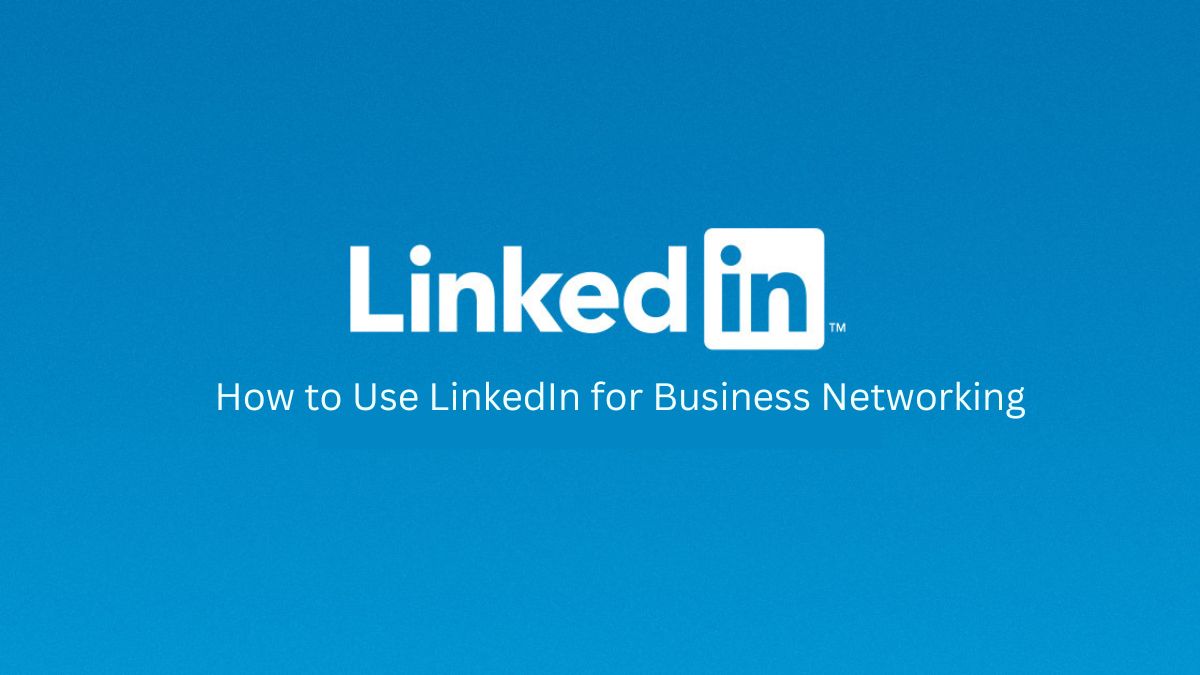
LinkedIn, the top professional networking site, is more than a digital resume. It’s now a powerful business networking tool. It connects users with industry peers, clients, and influencers. Mastering LinkedIn’s networking can boost your professional presence. It can also open doors to new business opportunities. This guide will show you how to use LinkedIn for business networking.
Understanding LinkedIn’s Role in Business Networking
What is LinkedIn?
LinkedIn is a social networking platform specifically designed for professionals. Launched in 2003, it lets users create profiles. These profiles highlight their work experience, skills, and education. It has become a vital tool for networking, job hunting, and career growth.
Why LinkedIn is Crucial for Business Networking
Professional Focus: Unlike other social media platforms, LinkedIn is dedicated to professional connections and career advancement.
Targeted Networking: LinkedIn offers advanced search and filtering options to connect with specific industry professionals and companies.
Content Sharing: Users can share and engage with industry-related content, enhancing their visibility and thought leadership.
Setting Up Your LinkedIn Profile for Networking Success
Crafting a Compelling Profile
Profile Photo: Use a high-quality, professional photo that reflects your industry and personal brand.
Headline: Write a clear and engaging headline that highlights your professional identity and key skills. Include relevant keywords to improve visibility.
Summary: Create a well-written summary that outlines your career achievements, expertise, and what you bring to the table. Use this section to convey your unique value proposition.
Experience and Skills: List your relevant work experience, accomplishments, and skills. Include specific examples and quantifiable results where possible.
Recommendations: Request and provide recommendations from colleagues, clients, and supervisors to build credibility and showcase your professional relationships.
Optimizing Your LinkedIn Profile
Keywords: Incorporate industry-specific keywords into your profile to improve searchability.
Custom URL: Customize your LinkedIn profile URL to make it easier to share and more professional.
Engaging Media: Add multimedia elements such as presentations, videos, or infographics to highlight your work and achievements.
Building a Strong Network
Finding and Connecting with the Right People
Identify Key Contacts: Focus on connecting with individuals who can support your business goals, such as industry leaders, potential clients, and strategic partners.
Use LinkedIn Search: Utilize LinkedIn’s search filters to find people based on industry, location, company, and more.
Join Industry Groups: Participate in relevant LinkedIn groups to meet like-minded professionals and engage in discussions.
Crafting Personalized Connection Requests
Personalize Your Message: When sending a connection request, include a personalized message explaining why you want to connect and how you found them.
Be Specific: Reference common interests or mutual connections to make your request more compelling.
Nurturing Your Connections
Engage Regularly: Interact with your connections by liking, commenting, and sharing their posts. This helps maintain visibility and strengthen relationships.
Provide Value: Share insightful content, industry updates, and helpful resources to establish yourself as a valuable connection.
Follow Up: After connecting, follow up with a thank-you message and explore opportunities for collaboration or discussion.
Leveraging LinkedIn Features for Networking
LinkedIn Groups
Join Relevant Groups: Participate in groups related to your industry or interests. Engage in discussions, share expertise, and connect with other group members.
Create Your Own Group: Consider starting a LinkedIn group focused on a niche topic to position yourself as a thought leader and attract relevant connections.
LinkedIn Events
Attend Industry Events: Register for LinkedIn events or webinars to network with attendees and speakers.
Host Your Own Event: Organize and promote events or webinars through LinkedIn to showcase your expertise and connect with your target audience.
LinkedIn Articles and Posts
Publish Articles: Share your insights and expertise by writing LinkedIn articles. This positions you as a thought leader and attracts engagement from your network.
Regular Posts: Share updates, industry news, and personal achievements regularly to stay visible and engaged with your connections.
Using LinkedIn for Lead Generation
Advanced Search Filters
Search for Leads: Use LinkedIn’s advanced search filters to identify potential leads based on criteria such as industry, job title, company size, and location.
Save Searches: Save your search criteria to receive regular updates and keep track of new leads.
LinkedIn Sales Navigator
Utilize Sales Navigator: Consider using LinkedIn Sales Navigator, a premium tool designed for lead generation and sales prospecting. It offers advanced search features and personalized recommendations.
Track and Engage: Use Sales Navigator to monitor leads’ activities and engage with them through tailored messages and content.
Measuring and Refining Your Networking Efforts
Analyzing Profile and Engagement Metrics
Profile Views: Track who is viewing your profile to identify potential networking opportunities.
Post Engagement: Monitor the performance of your posts and articles to gauge interest and adjust your content strategy accordingly.
Refining Your Networking Strategy
Assess Connections: Regularly review your connections and identify any gaps in your network. Focus on building relationships with key industry players and decision-makers.
Adjust Tactics: Based on your analysis, refine your networking tactics to improve your reach and engagement.
Case Studies and Examples
Successful Networking Stories
Case Study 1: A marketing professional used LinkedIn to connect with industry influencers and secured several speaking opportunities and partnerships by engaging in relevant groups and publishing insightful articles.
Case Study 2: An entrepreneur leveraged LinkedIn’s advanced search features to identify potential clients and used personalized connection requests and follow-ups to build a strong client base.
Lessons Learned
Consistency is Key: Regularly engage with your network and share valuable content to maintain visibility and build stronger relationships.
Be Genuine: Authenticity in interactions and communication helps build trust and foster meaningful connections.
Conclusion
LinkedIn is a powerful tool for business networking. It offers many chances to connect with pros, generate leads, and build your brand. To boost your career on LinkedIn, optimize your profile. Then, build your network and use the site’s features. Finally, refine your approach.
Use LinkedIn to network. Stay active and engaged. Use the insights to boost your business. If you want to network, find clients, or be a thought leader, LinkedIn can help. It is a great tool for business networking.




